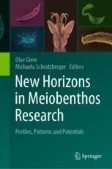Search
Search Results
-
Effects of water column depth and sediment base area on the bioturbation efficacy of freshwater operculate snails
The bioturbation potential of three freshwater operculate snails, Filopaludina bengalensis , Gabbia orcula and Melanoides tuberculata, was compared,...

-
Microbial Composition of Freshwater Marsh Sediment Responds more Strongly to Microcosm Seawater Addition than Simulated Nitrate or Phosphate Eutrophication
As sea level rise impacts coastal wetlands, saltmarsh will overtake coastal freshwater marsh in many areas, but changes in the sediment microbiome in...

-
Differences in desiccation tolerance of two Australian freshwater mussel species with different life history characteristics is temperature dependent
Mass die-offs, reduced species richness and local extinctions of freshwater mussels have resulted from river drying events, which often co-occur with...

-
Isolation and Identification of a Bacillus sp. from Freshwater Sediment Displaying Potent Activity Against Bacteria and Phytopathogen Fungi
A bacterium strain isolated from freshwater sediment of San Pablo river of Santiago de Cuba, Cuba was identified as a Bacillus sp. by Matrix-Assisted...

-
Pollution in Freshwater: Impact and Prevention
Water is the life blood of all living things and the most important natural resource on the earth planet. The water is available in liquid, solid and...
-
Spatio-temporal assessment of the relationship between freshwater invertebrates and environmental characteristics in Vendée wetlands, France
Freshwater invertebrates and zooplankton (FIZ) play a key role in freshwater ecosystems and in food webs, but there is little research on their life...

-
Freshwater Meiofauna—A Biota with Different Rules?
Great divergences arise when comparing the ecology of meiofauna in freshwater and marine ecosystems. Emphasizing the main differences between...
-
Freshwater Pollution: Overview, Prevention, and Control
All living creatures depend on water as an essential natural resource. However, increasing human population, development, and technology severely...
-
Holocene limnological changes in saline and freshwater lakes, Lower Nhecolândia, Pantanal, Brazil
The lower Nhecolândia region, in the south of the Pantanal, contains thousands of shallow freshwater and saline-alkaline lakes isolated by sandy...

-
The effects of physical disturbance and sediment refuge on the growth of young native freshwater mussels Elliptio complanata (Eastern Elliptio)
Native freshwater mussels form a critical component of benthic foodwebs, but are endangered worldwide, making their study an important conservation...

-
Sediment and Remediation of Aquaculture Ponds
The soil carries the water of the pond. The sediment or bottom mud of aquaculture pond is an important part of pond ecosystem. The nutrient exchange...
-
“Safe” Sequestration of Additional Phosphorus in Freshwater Wetland and Salt Marsh at Coastal Zone in the Yellow River Delta
Coastal wetlands can intercept and retain P from upland sources, limiting excessive P into coastal water. However, factors like hydrologic management...

-
Status of Microplastic Pollution in the Freshwater Ecosystems
Only 7% of the total plastic produced worldwide is recycled, allowing the majority of plastics to build in the environment and pose a tremendous...
-
Mexican Freshwater Fishes in the Anthropocene
Fishes are the most diverse group of vertebrates with 36,179 valid species, of which 45% of them are freshwater fishes. This freshwater fish...
-
A comparative study on the bioturbation ability of seven freshwater snail species
An assessment of the bioturbation potential of seven freshwater snail species was made in a laboratory microcosm study. Two non-operculate species, Ind...

-
Spatial distribution of sediment bacterial communities from São Francisco River headwaters is influenced by human land-use activities and seasonal climate shifts
Riverbed sediments are dynamic freshwater environments colonized by a great diversity of microorganisms which play important roles in supporting...

-
Sediment ingestion in the invasive apple snail Pomacea canaliculata
Sediment represents both a habitat and a trophic resource for many aquatic organisms, commonly known as deposit feeders. One of the most important...

-
Ecotoxicology Methodology of Sediment Toxicity in the Reservoir
The reservoir sediment can act as a drain and contaminant source. Once contaminants are released into the water column, they can be toxic for biota....
-
The dilemma of underestimating freshwater biodiversity: morphological and molecular approaches
BackgroundAnthropogenic impacts on freshwater habitats are causing a recent biodiversity decline far greater than that documented for most...

-
Interactions between sediment characteristics and oxygen conditions at the sediment–water interface of reservoirs: influences on nutrient dynamics and eutrophication
Dissolved oxygen (DO) level at the sediment–water interface is one key factor controlling redox-sensitive processes, such as nutrient cycling....

